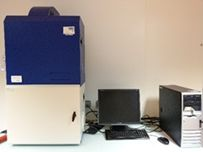Night OWL - Bioluminescent imaging system - Cells detection
- Tumor and Metastasis
- SPF
- Cells detection
- Tumor and Metastasis
- SPF
Imaging and analysis of living organisms > Imaging system > Optical
Bioluminescence imaging, its principle is to use the photochemical reaction of luciferase (enzyme) on its luciferin substrate. Thus, cells transduced by the gene encoding luciferase become bioluminescent in the presence of luciferin. This enzymatic reaction allows the study of infection by a pathogen (bioluminescent) or the monitoring of tumor progression (bioluminescent implanted cancer cells).
Contact Task Facility Manager (TFM)
04 69 85 61 98
Depending structure

The Cancer Research Center of Lyon (CRCL, UMR Inserm 1052 CNRS 5286 - Centre Léon Bérard) is a research structure affiliated with the University Claude Bernard Lyon 1, the national health and research bodies (Inserm and CNRS), the Léon Bérard Comprehensive Cancer Centre (CLB) and with the Lyon University Hospitals (HCL) as clinical partners. The CRCL was officially created in January 2011 and its 5-year contract was recently renewed for the 2016-2020 period. It comprises 24 teams, totalling over 480 members, including 138 researchers and lecturers. The CRCL aims at increasing its international visibility and the attractiveness of the Lyon cancer research cluster, at facilitating the transfer of knowledge from fundamental cancer research to clinical applications in oncology, and at developing teaching and training in oncology.
One of the main goals of the CRCL is to support the development of strong translatio
Other's Laboratory/Plateforme
Laboratory : Plateforme P-PAC Service imagerie

Federation :
SFR Santé Lyon-Est et SFR Biosciences
Lab tutorship :
Lyon 1 ; INSERM ; CNRS ; CLB
28 rue Laënnec
6900 Lyon

Continuous education :

Access with light support :

Open to academic :

Open to enterprises :







